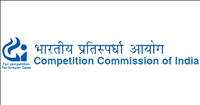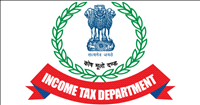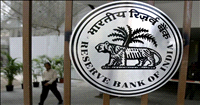Sorely needed: Global Indian IT brand
By Probir Roy | 21 Oct 2002
 Mumbai:
National
Association of Software and Service Companies (Nasscom)
is planning to bring on board a global public relations
agency to spread awareness of India, presumably as the preferred
information technology (IT) destination.
Mumbai:
National
Association of Software and Service Companies (Nasscom)
is planning to bring on board a global public relations
agency to spread awareness of India, presumably as the preferred
information technology (IT) destination.
This announcement comes at a time when there is an urgent need for a definitive India Inc brand-building initiative — a global integrated marketing exercise with the purpose of communicating a consistent message about the IT revolution and India’s place therein.
India Inc’s unique value proposition lies in knowledge rather than the more limiting IT competency, which is only one of the many manifestations of application of knowledge. The knowledge comparative advantage encompasses the entire value chain of the intellectual property such as designs, patents, ideas, concepts, methodologies, content, research, software and services.
Today we have a credible and internationally acknowledged stock of knowledge resources that allows us to compete effectively in any country across the world. The challenge for India Inc is to consciously build brands, whether they are services or products, which clearly impact the world.
One must keep in mind that India’s share of the global IT services and IT-enabled services (ITES) is about 1 per cent. Contrast this with our share of the finished gems and jewellery segment at 55 per cent. No one is shouting from the rooftops that we are a gems-and-jewellery superpower, least of all the associations and councils concerned.
Value
creation
 Where
angels fear to tread, the IT sector needs to tread carefully
to create a viable and robust India Inc brand in today’s
high-clutter, me-too market. In the India Inc exercise,
Nasscom needs to take an inventive role over the next
few years. This can be done in a two-pronged manner:
Where
angels fear to tread, the IT sector needs to tread carefully
to create a viable and robust India Inc brand in today’s
high-clutter, me-too market. In the India Inc exercise,
Nasscom needs to take an inventive role over the next
few years. This can be done in a two-pronged manner:
- Marshalling and closely collaborating with special interest groups within and outside the immediate IT sector, be they nano-technologies, embedded systems and software, genomics, microelectronics, smart governance, pharma research and development, bio-sciences and bio-technologies, or content development (gaming, animation, filmed entertainment) — in short, wherever IT is an enabler or driver. Since some of these, like animation, smart cards and ITES, are keen to carve out their own niche, Nasscom will have to adopt a loose, yet federalist, approach.
- Facilitating an innovation ecosystem comprising public and private firms, research centres, universities, consultants, government agencies and non-governmental organisations that can tap into the growing stock of global knowledge, assimilate and adapt it to local needs and create new knowledge and technology.
![]() Several
low-key initiatives in the private sector have validated
such collaborative ecosystems. The Kanwal Rekhi Institute
of Information Technology, run under the aegis of IIT-Bombay,
and IndiaCo, a Pune-based incubator, are two places where
this is being done, albeit on a smaller scale.
Several
low-key initiatives in the private sector have validated
such collaborative ecosystems. The Kanwal Rekhi Institute
of Information Technology, run under the aegis of IIT-Bombay,
and IndiaCo, a Pune-based incubator, are two places where
this is being done, albeit on a smaller scale.
The National Innovation Foundation (NIF), run under the aegis of the Council of Scientific and Industrial Research, is an India government initiative with similar intent — fostering innovation and creativity in the field of basic science and technology, with the ultimate go-to-market value. All told, there are about 100 projects with these guardian organisations, when the potential for a country this size is several times that.
Taking
stock
So where are we today one year after 9/11 and two-odd
years after the technology bubble burst? American spending
on IT, still a key driver, has shrunk by 10 per cent in
2001, as opposed to the 20-per cent growth in 2000. It
is expected that 2002 will see a marginal 2.3-per cent
growth rate, and it will be three years more before we
return to the double-digit growth rates that our IT services
sector has become used to.
 Even
as the technology sector and the overall economy crawl
their way out of recession, the new avatar of IT-service-led
demand will be driven by global business managers’
decisions on how to allocate scarce resources for emerging
products and services to bring in better business results.
Even
as the technology sector and the overall economy crawl
their way out of recession, the new avatar of IT-service-led
demand will be driven by global business managers’
decisions on how to allocate scarce resources for emerging
products and services to bring in better business results.
Profligate technology deployment and engagement of service providers without changing processes and organisations will create little positive impact — and may even bring in negative results. Therefore, concomitant processes will have to be adopted and organisation change plans thought out and executed before IT spending gets off the block.
This will certainly challenge service providers, whether independent software vendors or independent systems integrators, to expand their range of professional services and get into some up-front and close business and process consulting work. Service providers who are neither comprehensive nor niche providers will come under severe pressures.
 Roy
has 16 years’ experience in information technology.
He was vice-president (technology) at Star TV, South Asia;
chief operating officer, Euro RSCG Interactive, the world’s
No 1 Interactive and e-consulting company; and chief technology
officer, Euro RSCG Advertising, India and Middle East.
He has also worked with the United Nations, Vienna, and
the Department of Atomic Energy, India. He can be contacted
at: psiroy@satyam.net.in
Roy
has 16 years’ experience in information technology.
He was vice-president (technology) at Star TV, South Asia;
chief operating officer, Euro RSCG Interactive, the world’s
No 1 Interactive and e-consulting company; and chief technology
officer, Euro RSCG Advertising, India and Middle East.
He has also worked with the United Nations, Vienna, and
the Department of Atomic Energy, India. He can be contacted
at: psiroy@satyam.net.in
Featured articles

Lighter than air, yet very, very powerful
By Kiron Kasbekar | 03 Jan 2024
In March 2013 Chinese scientists pulled off a remarkable feat. They created the world’s lightest aerogel. Tipping the scales at a mere 0.16 milligrams per cubic centimeter – that’s a sixth of the weight of air!

COP28 explained: A closer look at COP28's climate change solutions
By Aniket Gupta | 27 Dec 2023
The 28th United Nations Climate Change Conference, also known as COP28, took place from 30th November 2023, to 13th December 2023, at Expo City in Dubai, United Arab Emirates.

What is a Ponzi scheme?
By Aniket Gupta | 06 Dec 2023
Ponzi schemes have long captivated the public imagination, drawing unsuspecting investors into a web of illusion and deception.

The Rise and Rise of HDFC Bank
03 Jul 2023
HDFC, which surged ahead of global majors like HSBC Holdings Plc and Citigroup Inc and left Indian peers like State Bank of India and ICICI Bank in market capitalisation, now ranks fourth largest among the world’s most valuable banks, after JPMorgan Chase & Co, Industrial and Commercial Bank of China Ltd and Bank of America Corp

India’s Millet Revolution To Enrich Global Food Basket
02 Apr 2023
Millets, a healthier and cheaper substitute to wheat and rice, are indigenous to many parts of the world, especially in the semiarid tropics of Asia and Africa, and offers a big scope for expanding production and consumption in the foodgrain deficient African continent

Market predator Hindenburg preys on Adani stock
06 Mar 2023
Almost a month after the damning report of short-seller Hindenburg Research on the Adani Group that claimed that the seven stocks within the group were about 85 per cent overvalued, one of the group's stocks, Adani Total Gas, closed at Rs835 on the BSE, down nearly 79 per cent from its 24 January level, almost close to reaching that valuation
Business History Videos

History of hovercraft Part 3...
By Kiron Kasbekar | Presenter: Kiron Kasbekar

History of hovercraft Part 2...
By Kiron Kasbekar | Presenter: Kiron Kasbekar

History of Hovercraft Part 1...
By Kiron Kasbekar | Presenter: Kiron Kasbekar





















